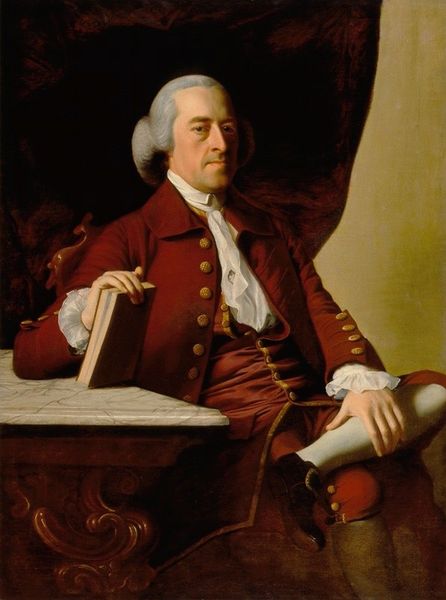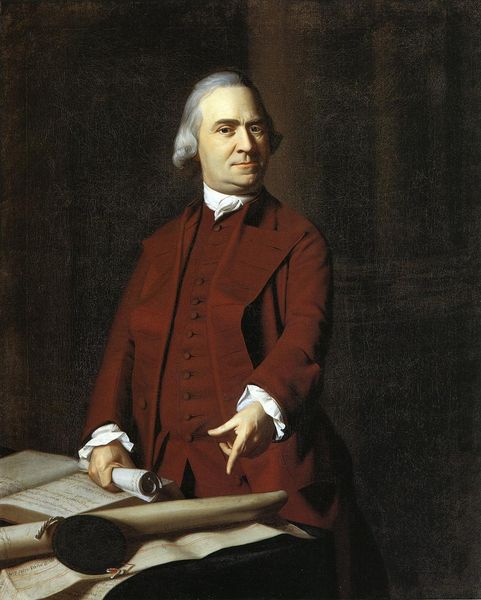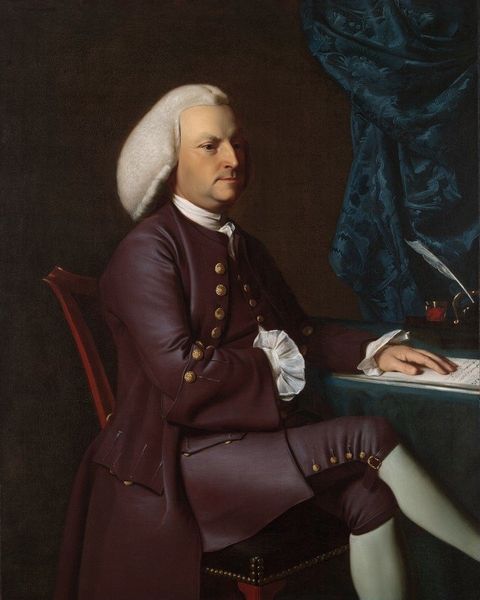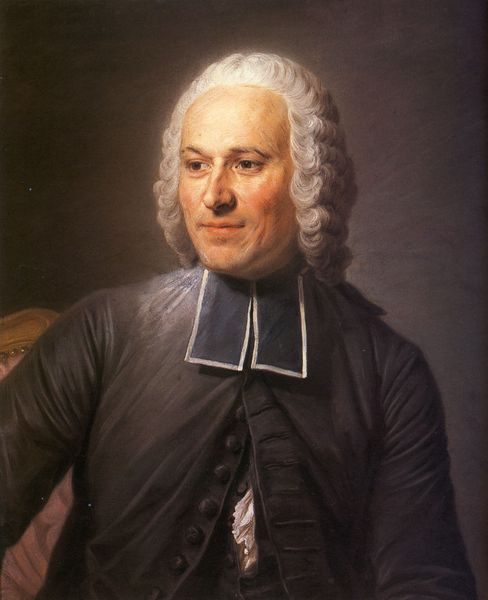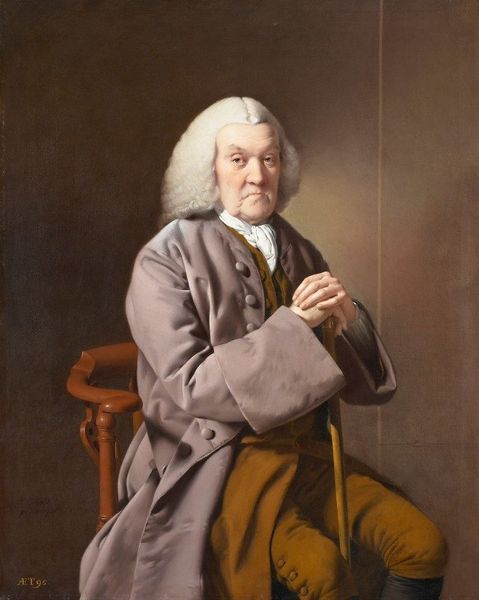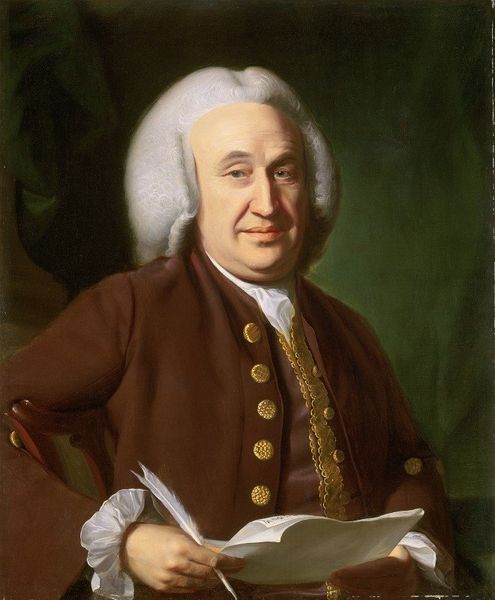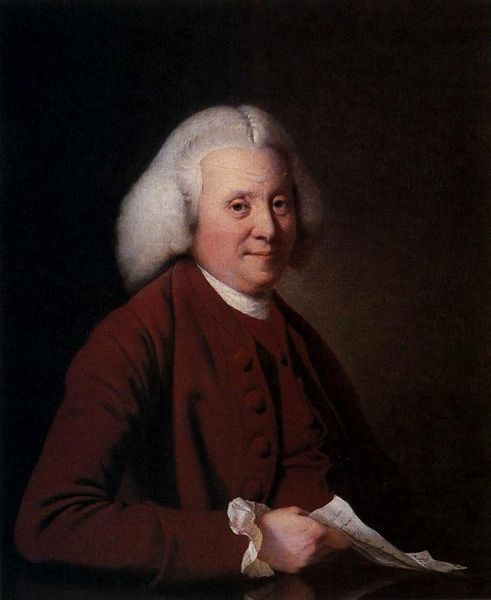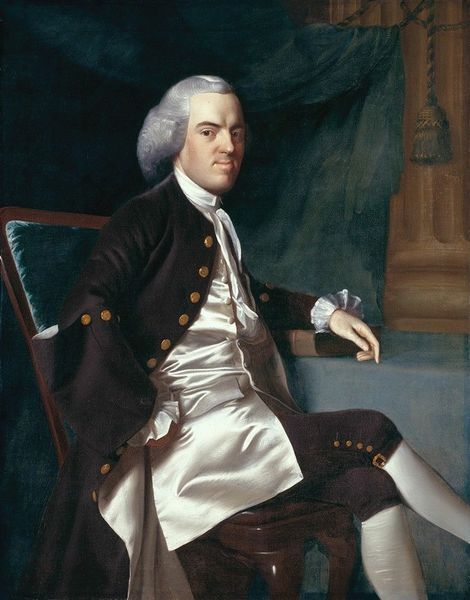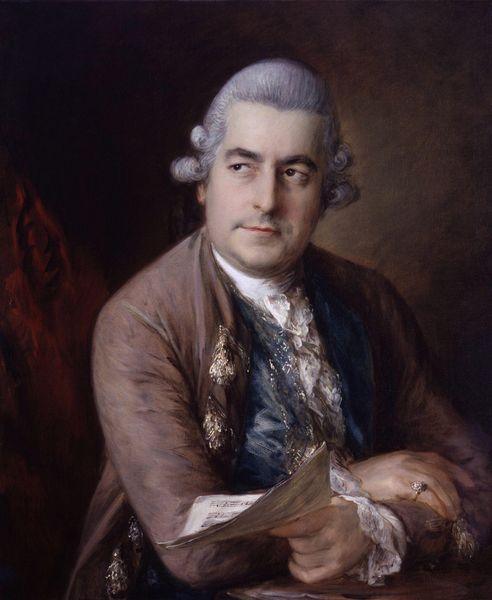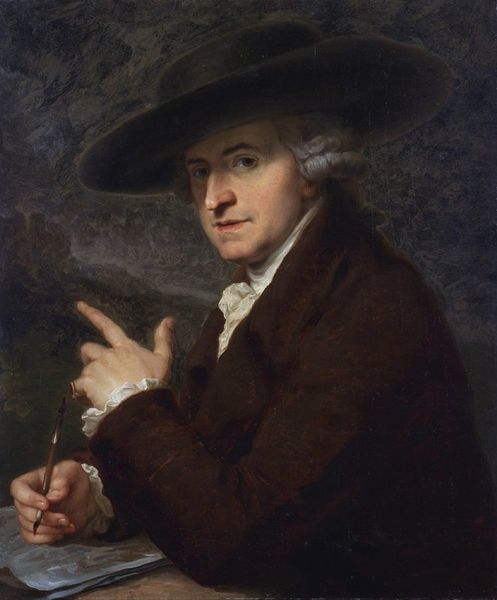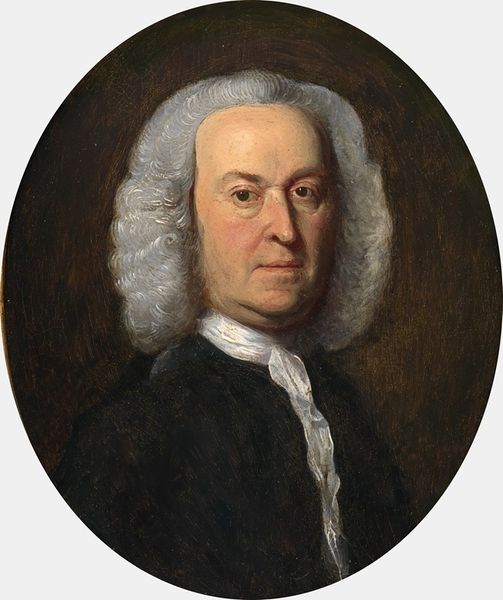
Dimensions: 127 x 101.6 cm
Copyright: Public domain
Curator: Here we have John Singleton Copley's oil-on-canvas portrait of Ezekiel Goldthwait, painted in 1771. Editor: My immediate impression is one of self-assurance, but also constraint. Look at how rigidly he sits. Is he relaxed or posturing? Curator: Well, portraiture in the Baroque style certainly carried expectations of dignity. But what I find interesting is how Copley is portraying Goldthwait in the years leading up to the American Revolution. Think about the implications of commissioning a painting like this. Editor: Indeed. The very act of commissioning a portrait spoke volumes about one's social standing and allegiance. The tight control of composition feels reflective of the subject's, and perhaps the society's, rigid hierarchical structure. Look at the way he holds that quill, as if in contemplation. Curator: That quill, along with the document he holds, serves as potent symbols of his role and power in society. A man of letters, a man of influence, participating in a world that soon to collapse and be swept away in this colonies of a new nation. Editor: How interesting, this collapse. The wig, for example, appears almost too large, exaggerated to symbolize the authority it signified. The painting itself becomes an artifact of this bygone era and this changing world of an aging man. It feels consciously academic in its construction. Curator: Precisely. Academic, aspiring toward established European norms even as those very norms were being challenged by burgeoning revolutionary sentiment right here in Boston. But beyond that political undercurrent, it presents a clear symbol about transition and a visual snapshot in this period in American history. Editor: I'll walk away pondering the silent tension between Goldthwait's stoic pose and the impending historical change swirling around him. The portrait serves not just as an image of an individual but of his time. Curator: For me, the painting reveals not just Goldthwait but the very psyche of colonial America at the precipice of transformation. It invites a kind of psychological digging.
Comments
No comments
Be the first to comment and join the conversation on the ultimate creative platform.
